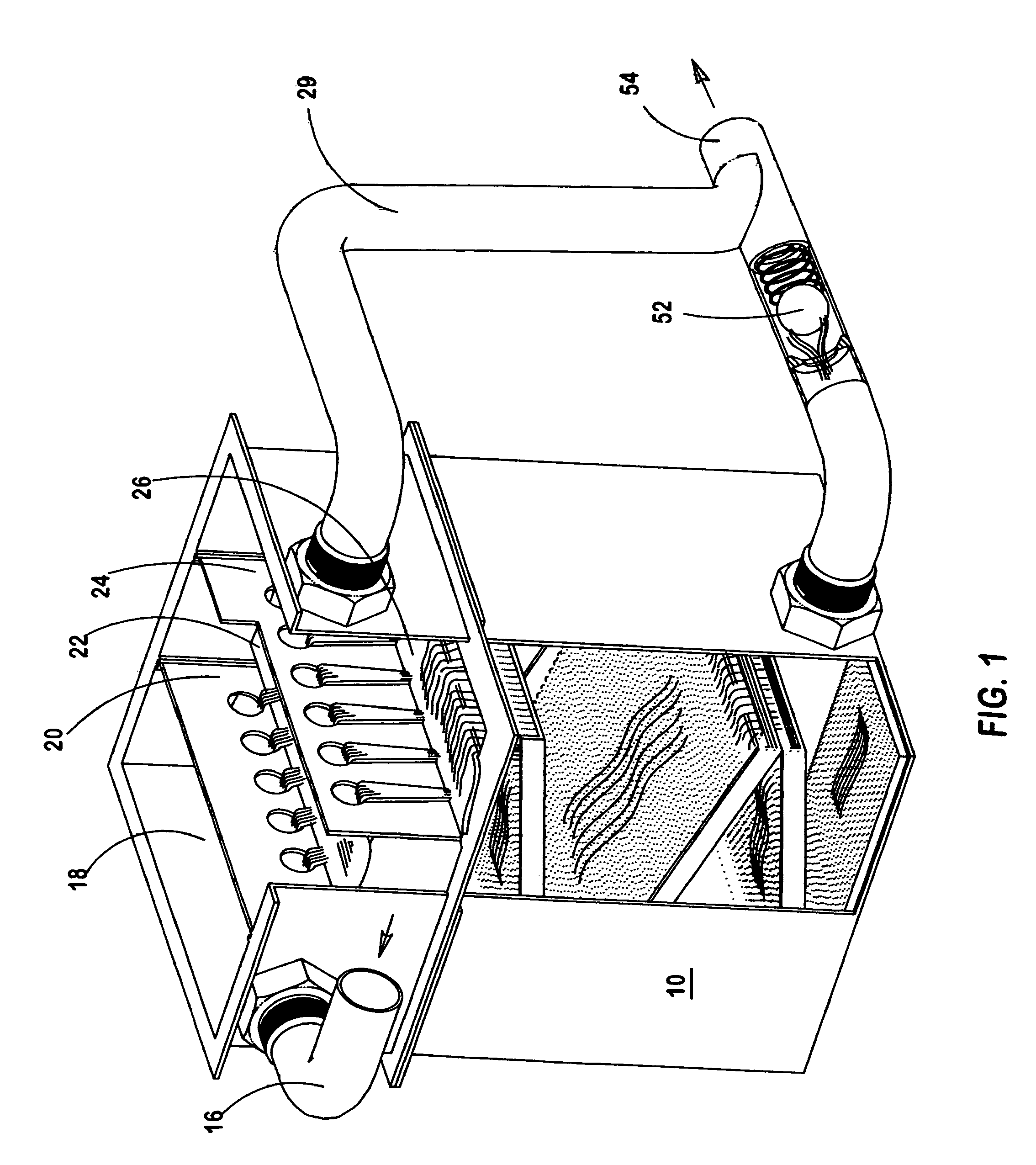Low-cost magnetically aided apparatus for separating dental amalgam from waste water
a technology of magnetically assisted apparatus and amalgam, which is applied in the direction of separation process, filtration separation, liquid displacement, etc., can solve the problems of mercury in amalgam, environmental hazards, and inability to dispose of mercury-containing waste water into municipal sewer systems in many locales, and achieve safe absorption of air pressure peaks, the effect of reducing the level of mercury
- Summary
- Abstract
- Description
- Claims
- Application Information
AI Technical Summary
Benefits of technology
Problems solved by technology
Method used
Image
Examples
Embodiment Construction
[0033]Reference is first made to FIG. 2 showing how my magnetically-assisted replaceable module 10 may be incorporated in a dental office waste disposal system. A dental patient is in a chair 60 and is being treated by a dentist. A suction hose 62 is part of a vacuum system 64 that picks up waste water and solid materials from the patient's mouth as the work is being done. This waste water contains, among other things, dental amalgam formed from a mixture of silver and mercury. The vacuum delivers the water through a removable screen cup 66 where larger particles are collected. The effluent then passes through my replaceable module 10 to provide magnetically-aided amalgam separation. Relatively clean water then flows from an output 68 of the separation module direct to a public sewer system 72. The relatively clean water may, alternatively, also pass through a charcoal or chemical filter 70 before reaching a public sewer. A dotted line 74 and arrow 76 indicate that the entire amalga...
PUM
| Property | Measurement | Unit |
|---|---|---|
| size | aaaaa | aaaaa |
| gravity | aaaaa | aaaaa |
| air pressure | aaaaa | aaaaa |
Abstract
Description
Claims
Application Information
 Login to View More
Login to View More - R&D
- Intellectual Property
- Life Sciences
- Materials
- Tech Scout
- Unparalleled Data Quality
- Higher Quality Content
- 60% Fewer Hallucinations
Browse by: Latest US Patents, China's latest patents, Technical Efficacy Thesaurus, Application Domain, Technology Topic, Popular Technical Reports.
© 2025 PatSnap. All rights reserved.Legal|Privacy policy|Modern Slavery Act Transparency Statement|Sitemap|About US| Contact US: help@patsnap.com



